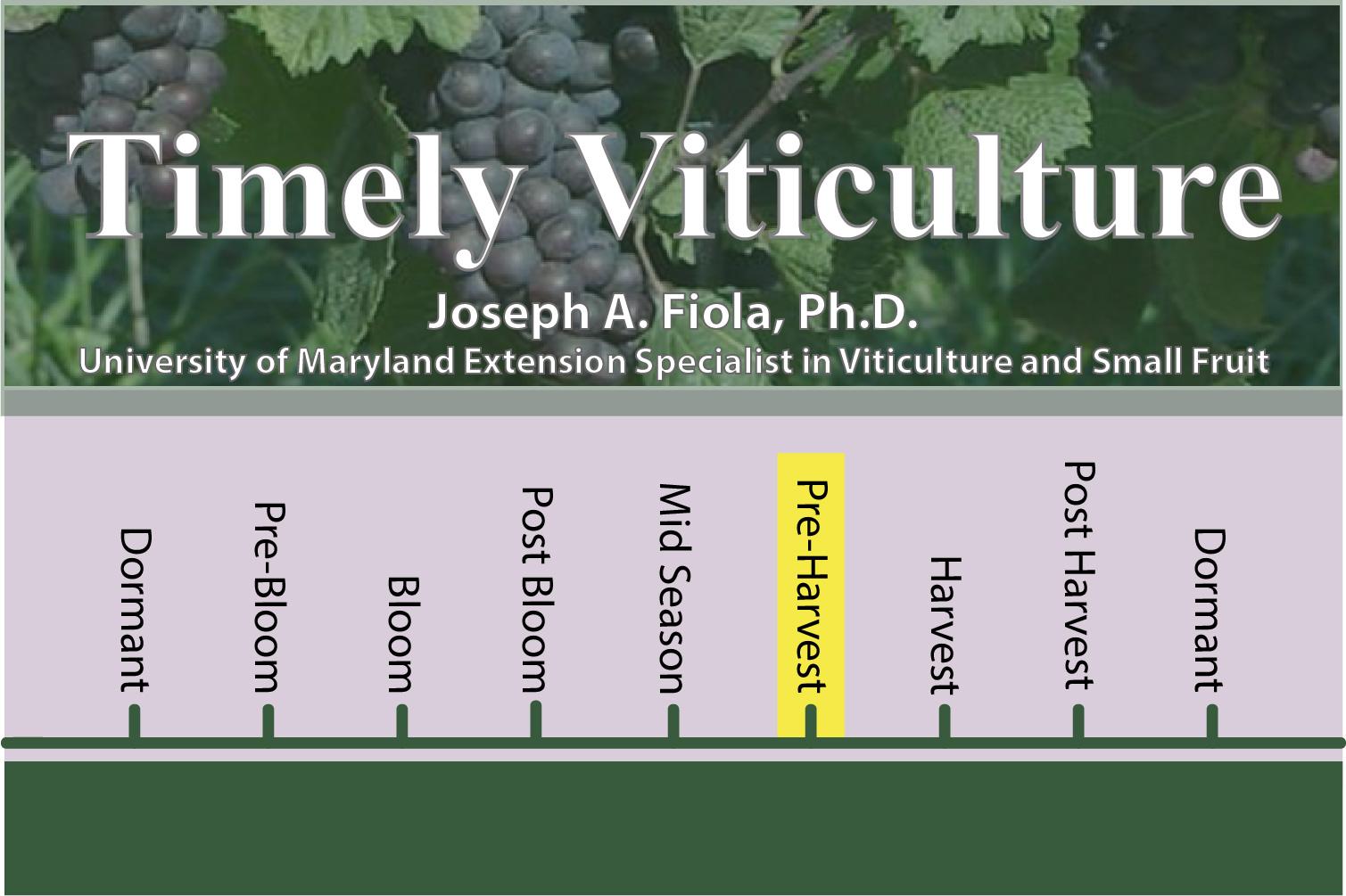Early Warning: Multi-Colored Asian Ladybeetle (MALB) For Grape Growers
Over the past few years, harvesting of some Maryland and Eastern U.S. grapes has been complicated by the presence of Multicolored Asian Ladybeetles (MALB - Harmonia axyridis). The adult beetles can damage fruit in the field but most importantly, acts as a contaminant of the harvest, “fatally” tainting the wine made from the grapes.
Some background on the biology, life cycle, and identification
- Adults & larvae are generalist predators that feed on aphids, scale insects, mites, and other insects. (All of the above pests damage agricultural crops, home, garden, and landscape plantings.)
- n summer they find food, find a mate, and reproduce. There may be several generations per year with a larger proportion of later generations predisposed to overwintering.
- Aggregation behavior (searching for overwintering sites and fruit crops) is triggered by the start of shorter days and cooler temps - when temperatures drop quickly followed by a sunny day (typically in late September to early October).
- This has been the weather pattern for a few weeks, so growers of fall fruit crops concerned about ladybeetles should be scouting fields regularly for the first signs of the beetle.
- Adult beetles have been found to vector fungal diseases and, therefore, their aggregating nature may be favorable to the dissemination of bunch rot and other diseases from one grapevine to another.
- When disturbed or crushed, MALB responds by "reflex bleeding" which forces hemolymph out of their joints. This alkaloid is highly unpleasant to taste and smell and can irreversibly taint the aroma and flavor of the resulting wine.
- There is a major amount of color variation within the MALBs
- Red color due to the high quality of food eaten as larva (i.e., lots of tasty aphids)
- Yellowish color due to fewer aphids consumed, but more pollen as a larva
- More spots, lower temperature, and a longer duration of the pupa stage
- Fewer spots, higher temperature, and a shorter duration of the pupa stage
- Many beetles have a straw-colored pronotum (top covering of middle body part) with markings that fuse into a regular- to irregularly-shaped "M" if viewed from the front, or "W" if viewed from behind.
Control considerations and options
- Growers concerned about ladybeetles should be scouting fields regularly for the first signs of the beetle.
- Control fruit rots as these will attract the beetles.
- The threshold for perceivable taint in wine = 10-12 beetles/lug of grapes
- Mechanical or hand harvesting during the daytime may sufficiently shake the vines to cause the beetles to leave the grape clusters ahead of the harvester.
- Night harvesting may not create this effect as the beetle burrows deep into the cluster and becomes much less active.
- Remember these are lady beetles, which are typically considered VERY DESIRABLE, so labeled control is limited.
- Ladybeetles are efficient predators of pest insects for the majority of the growing season, and most chemical controls for this introduced beetle will also kill native predators, thereby allowing other insects and mites to become a problem.
- Since the crop typically becomes infested just prior to harvest, growers’ options are restricted by the need for materials with a very short PHI (pre-harvest interval).
- While insecticides do a good job of knocking down the population, dead beetles often times can remain in or on the cluster. If harvested along with the fruit, the dead beetles can still taint the wine for at least 2 days.
- More specifics on insecticides in the next “Timely Viticulture”
Here are some good websites to check for pictures and fact sheets for more detailed information
- Ladybug - Multicolored Asian Lady Beetle
Iowa State University, Extension and Outreach, Horticulture and Home Pest News
- Multicolored Asian lady beetle, Harmonia axyridis (Pallas)
Buckeye Appellation, College of Food, Agricultural, and Environmental Sciences, Ohio State University - Multicolored Asian Ladybeetle
Howard Russell, MSU – Diagnostic Services; Christine DiFonzo, MSU – Department of Entomology
Michigan State University
- Watch out for multicolored Asian ladybeetles during grape harvest
Rufus Isaacs, Michigan State University Extension, Department of Entomology-September 4, 2007
